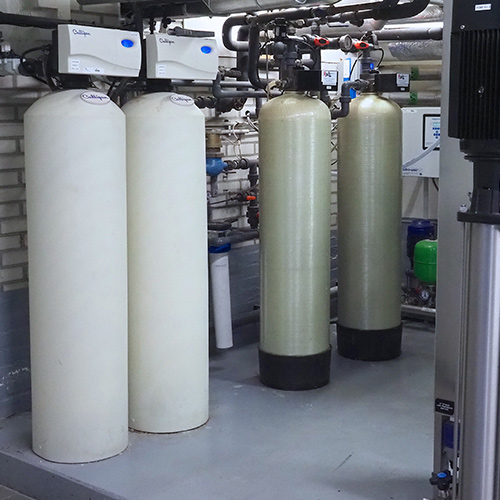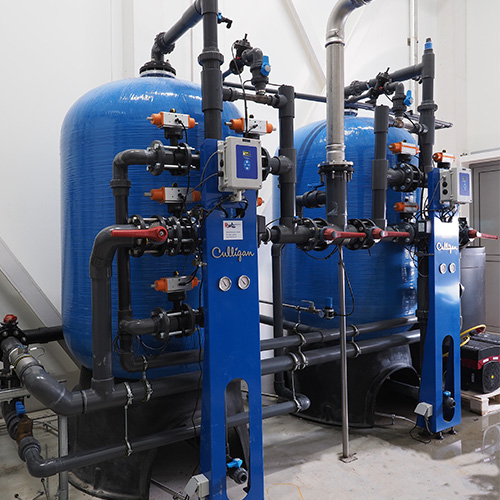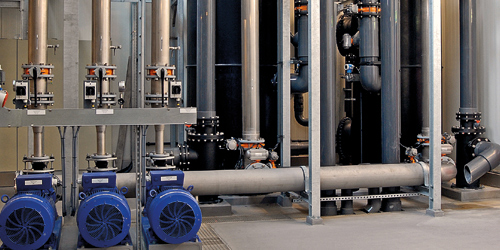Ion exchange-based water softening is a widespread technique for removing dissolved substances from water.
The technique is robust and suitable for all kinds of applications, from the removal of heavy metals from waste water to the production of ultra-pure water.
The term ion exchange is used because dissolved substances, ions, are removed from the water and other ions are released back into the water. By cleverly choosing the exchange ion, the produced water quality can be adjusted to specific needs. Water softening based on ion exchange has the following characteristics:
Applications:

Operation
For water softening, ion exchange resin is the essential ingredient of the technique. These are plastic balls with a diameter between 0.5 and 1 millimeter. The balls are porous and insoluble, and contain chemical compounds to which the exchanging ions can adhere.
The resin is usually located in a flow-through vessel. Ions are collected from the water flowing through, and the counter ions are donated to the water. By applying different resins after or through each other, both positive and negative ions can be recorded and exchanged. By applying different resins, a preference for specific ions can be achieved.
The resin becomes saturated with the absorbed ions. By rinsing the saturated resin with diluted chemicals, it is activated again. These chemicals are mostly cheap bulk chemicals such as caustic soda and hydrochloric acid.
Experience RWB
RWB has extensive knowledge and experience with the application of ion exchange. From small waste water polishing units to installations that supply hundreds of m³/h of ultra-pure water, completely designed and realized in-house. In addition, we advise and manage installations in markets such as energy production, food & beverage, medical/semiconductor, oil & gas, galvano.
Realized projects
More information about water softeners?
Feel free to contact us via the number below or use the contact form.





